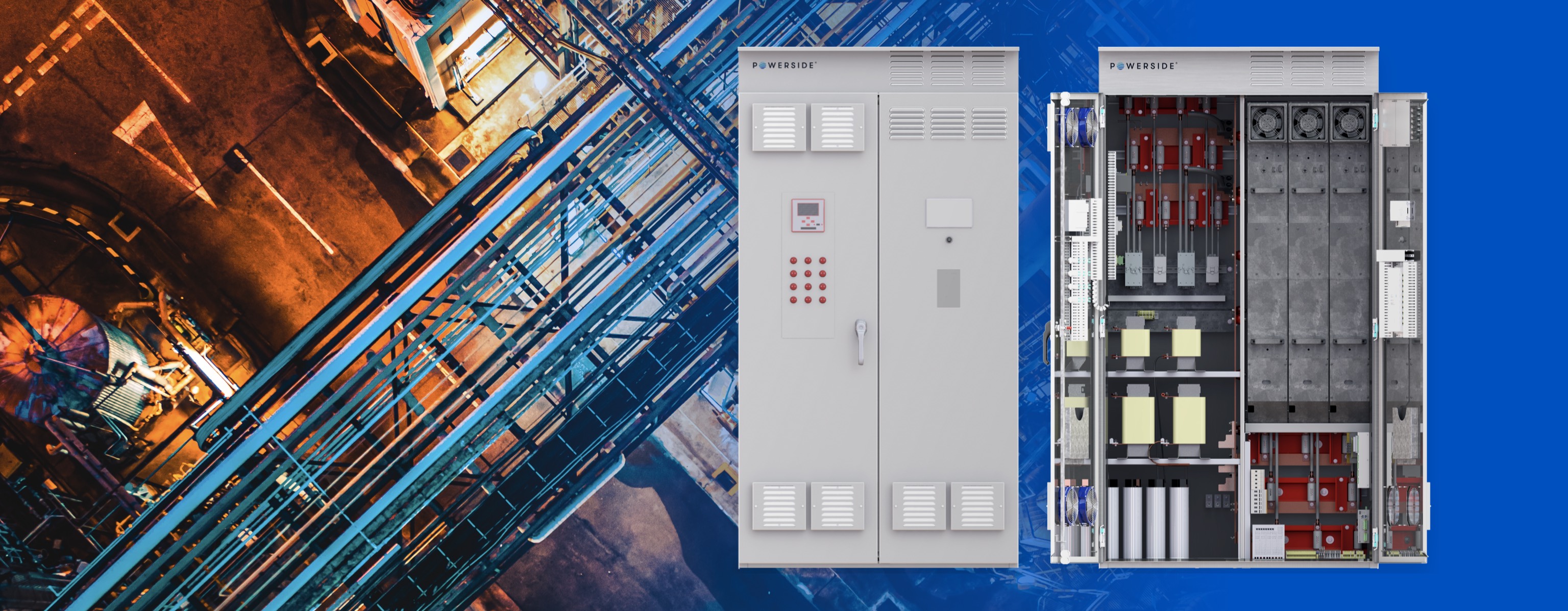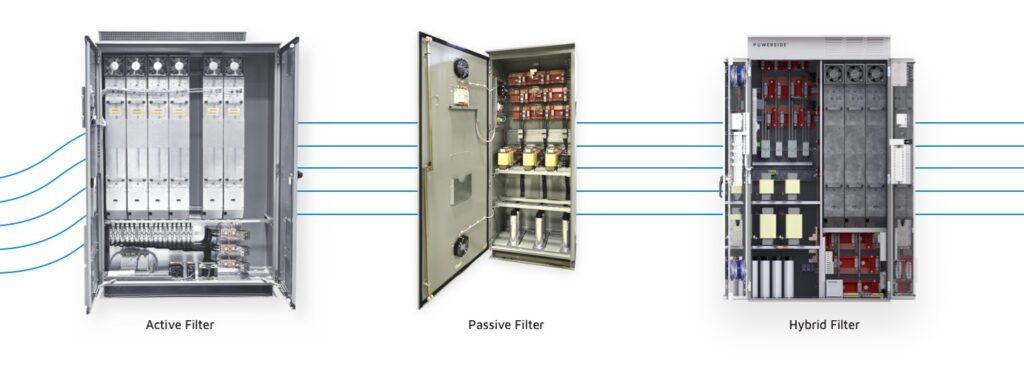
Damage to vital equipment. Increased downtime. Decreased efficiency and profitability. Those are just a few issues that can be traced to harmonic distortions. But to mitigate these disruptions you’ll need to identify the right correction solution.
The two primary lines of defense against harmonics are active and passive filters, each addressing different aspects and sources of harmonic distortion. Depending on the nature of your particular system, you may also require a mix of both filter types.
To meet this critical market need, Powerside has unveiled the PowerAct Hybrid Filter, a state-of-the-art product that seamlessly combines both active and passive filter functionalities into a single, compact design.

The difference between active, passive and hybrid filters
Passive filters are most effective for mitigating harmonics that originate from a singular, large nonlinear source. These filters are particularly suitable for mid-to-large scale industrial operations due to their low maintenance requirements and because they don’t require a dedicated power source.
Active filters, on the other hand, work best for systems where multiple variable frequency drives (VFDs) generate harmonics across a broad frequency range. Active filters can adapt to varying harmonic conditions, effectively filtering out harmonics by injecting equal and opposite frequencies into the system.
Finally, the PowerAct Hybrid Filter provides a cost-effective option for systems that can benefit from both active and passive filtering techniques for reactive power compensation, load balancing and harmonic mitigation. With footprint savings of nearly 40% compared to traditional designs, and a single power source that requires only one breaker and one set of cables and conduits — the PowerAct Hybrid Filter delivers optimal space savings and decreased installation costs.
The passive filter section can be configured specifically for your applications — with options for both automatic and fixed compensation as well as detuned or tuned filtering techniques. Meanwhile, the active filter section can provide instantaneous reactive power compensation for voltage stability — and harmonic mitigation to the 51st harmonic order using current or voltage control methods.
So how do you decide on the best option?
Ultimately, the root causes of harmonic distortions will determine which filter is appropriate. For instance, if a single, large VFD is chiefly responsible for your system’s nonlinear loads, a low maintenance passive filter is typically best. On the other hand, systems with nonlinear loads from multiple VFDs usually require an active filter that can adapt to varying frequencies. And of course, if the source of those nonlinear loads requires both filter types, you can consider a hybrid solution.
Navigating the intricacies of harmonic distortions can be complicated. Fortunately, Powerside’s team of experts is ready to guide you through the whole process, evaluating your system’s needs and recommending the best solution. When you’re ready, contact us for a detailed power analysis.